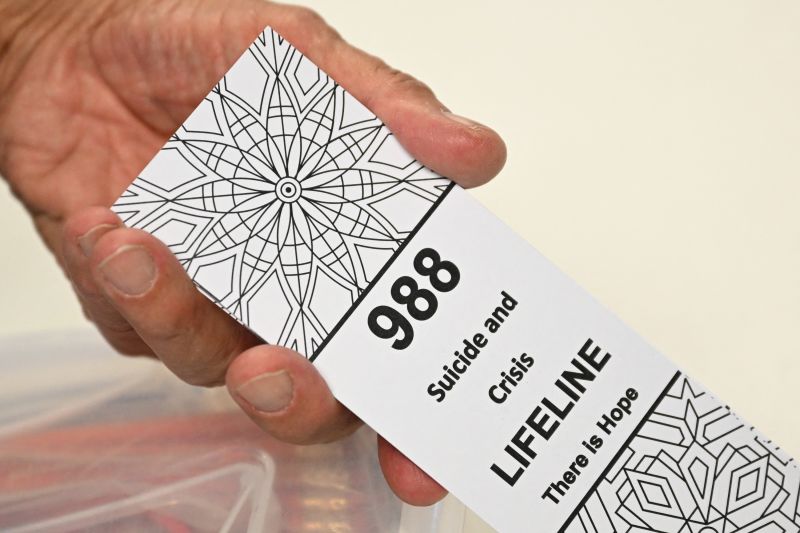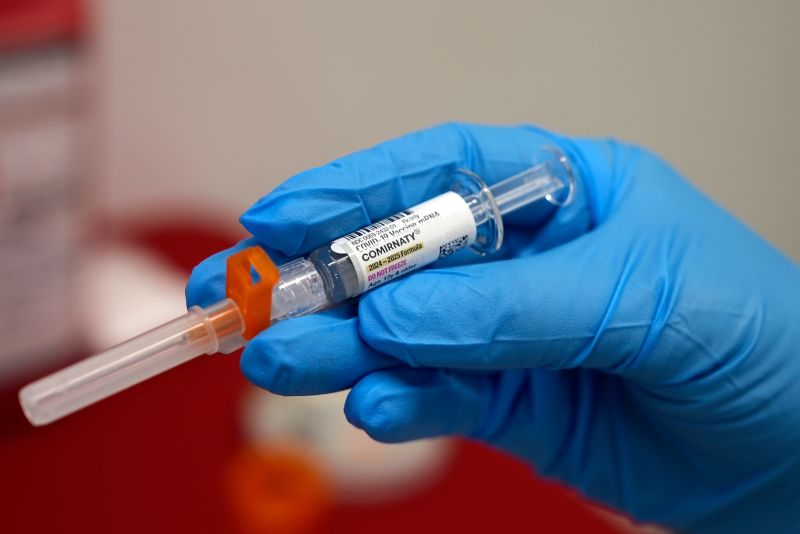A startling new vision of vaccination in America is becoming clearer — one likely to involve fresh scrutiny of established science and practices, and limits on vaccines that have been studied for decades.
The first meeting of new vaccine advisers to the US Centers for Disease Control and Prevention wrapped up Thursday after days of discussions that rankled mainstream scientists, public health experts and major medical associations. The committee’s votes could bring an end to the use of a robustly studied preservative in flu shots, a shift that may ultimately limit access to vaccines for some people.
Even before Robert F. Kennedy Jr., a longtime vaccine skeptic, was confirmed to lead the US Department of Health and Human Services, many public health advocates and politicians worried that he would target the advisory committee in an effort to undermine confidence and restrict access to vaccines. When he removed all 17 previous members of the panel about two weeks ago and replaced them with eight of his own picks – many of whom had stated objections to vaccines – some considered it a step too far.
Questions about the panel dominated hearings with Kennedy and President Donald Trump’s pick to lead the CDC this week. Sen. Bill Cassidy, a doctor and the top Republican on the Senate Health, Education, Labor and Pensions Committee who cast a key vote for Kennedy’s confirmation, said the advisory meeting should be postponed until the panel had more members with “direct relevant expertise.”
The new members were a sharp contrast to their predecessors in terms of expertise and experience, and it made for an erratic, sometimes contentious meeting — often delayed by technical and procedural snafus — where CDC experts pushed back on advisers’ or presenters’ theories and interpretations of data.
“This meeting was clearly orchestrated to sow distrust in vaccines,” said Dr. Sean O’Leary, a pediatrician at Children’s Hospital of Colorado who has been a liaison member to the CDC Advisory Committee on Immunization Practices for the American Academy of Pediatrics, after Thursday’s meeting. “The process today also set a very dangerous precedent going forward. This committee is making important policy decisions based on pseudoscience, and ultimately, this is going to harm us all.”
Kennedy’s influence was felt at the meeting more than once. Last-minute presentations were added to the advisers’ agenda for two topics that have long been fodder for vaccine skeptics: thimerosal, a mercury-based preservative that was largely phased out of vaccines more than two decades ago; and a rare risk of febrile seizures after some kinds of combination measles vaccines.
The thimerosal presentation deviated sharply from long-held ACIP standards. It wasn’t presented by a CDC expert or a member of the advisory committee’s work group but rather by Lyn Redwood, a registered nurse who has long worked in partnership with Kennedy through his anti-vaccine group, Children’s Health Defense, and before that as founder of the World Mercury Project. Unlike most ACIP presentations, Redwood’s was not vetted by experts in vaccine science before the vote took place. A version of the presentation posted online this week cited a study that doesn’t exist and was later replaced.
The committee – now down to seven members after one of the new appointees resigned – also announced plans to launch studies of established vaccine guidelines, including the child and adolescent vaccine schedules.
“Our central duty is to protect public health, and we understand that we must answer the call for reestablishing confidence in the scientific examination process,” the members said in a statement Thursday.
“Our votes are recommendations, but we know that some may perceive them as mandates, so we take this responsibility very seriously. We pledge to not hold a vote if there is not sufficient information to enable evaluation of the risks and benefits.”
ACIP’s recommendations have played a pivotal role in how vaccines are used in the United States for decades. They guide doctors, insurance coverage, manufacturers’ plans, school requirements and purchasing decisions. In some states, ACIP’s recommendations are so trusted that they’ve been written into law.
That may be changing now: Some states are writing it out of laws, and influential medical groups say they’ll take their own steps to ensure vaccine access and clarity about how to use them.
“Recent changes to federal immunization review processes raised concerns across the medical and public health community. In this moment of uncertainty, physicians must align around clear, evidence-based guidance for patients,” dozens of major medical associations – including the American Medical Association, the American College of Physicians and the American Academy of Family Physicians – wrote in an open letter about the meeting.
“We commit to working together to promote public understanding and confidence in the use of vaccines to avoid another severe respiratory virus season and resurgence of vaccine-preventable illnesses and deaths. We call on our partners – from insurers to hospitals to public health agencies – to ensure vaccines remain available to patients without cost sharing.”
The American Academy of Pediatrics announced this week that it would no longer participate in ACIP meetings because of the changes to committee membership and what’s being discussed. It will continue to publish its own schedule of recommended vaccinations, which harmonized with the CDC’s for decades until Kennedy’s tenure.
“As an organization, we remain committed to the health of children, and as a result, we will continue to publish an evidence-based, science-based schedule that is designed to protect as many children and adolescents as possible in as safe a way as possible,” O’Leary said of the group.
The American public, he said, should no longer trust the CDC panel’s decisions.
“Over the last few days, we’ve heard a troubling amount of misinformation about vaccine policy specifically aimed at sowing distrust,” O’Leary said, calling the committee and its discussions “an embarrassment.”
Although the US immunization system is a “model for the rest of the world,” he said, that may not be the case for long. “Sadly, at this point, a lot of the world is looking at us, at what’s happening here in the US with ACIP, in horror.”
Here are more takeaways from the first meeting of Kennedy’s vaccine panel.
Key decisions on RSV immunizations and flu vaccines
The advisers made a number of new recommendations this week.
On Thursday, they reaffirmed a previous ACIP recommendation that everyone 6 months and older receive an annual flu vaccine, then voted to endorse flu vaccines that are free of thimerosal, although there’s no evidence of harm from the preservative and it was used in only about 4% of flu vaccines given in the US last year.
Members also voted to recommend the use of a new shot that can protect babies from respiratory syncytial virus, the most common cause of hospitalization in infants. Clesrovimab, which will be sold under the brand name Enflonsia, is an antibody made by Merck that joins two other interventions on the market to protect babies against severe disease from RSV.
Although some members of the group disagreed on whether the antibody should be recommended for babies, the advisers voted unanimously that the Merck shot should be included in the Vaccines for Children Program, which provides free vaccines to children whose families may not be able to afford them. There was initially some consternation about the Vaccines for Children vote, typically a routine step after the recommendation of a new vaccine. It went on without incident after explanations for the new panel about the role of the program in ensuring access.
But these decisions aren’t finalized: ACIP’s recommendations now go to the CDC director to be finalized. However, as CDC nominee Dr. Susan Monarez is still awaiting Senate confirmation, the recommendations may go to Kennedy.
Last-minute agenda elevated issues at center of anti-vaccine arguments
Although some parts of the ACIP agenda were planned long ago, last-minute changes put fresh attention on matters that anti-vaccine groups have focused on for decades.
Thimerosal, a preservative that anti-vaccine groups have falsely blamed for neurodevelopmental issues such as autism, became a major point of this week’s meeting. It was removed from most shots decades ago because of concerns that it contains a form of mercury. Subsequent studies showed that thimerosal wasn’t linked to neurodevelopmental issues, including autism. Nonetheless, it became a focus for groups including Children’s Health Defense.
After the advisers voted to recommend only single-dose flu vaccines, which do not contain thimerosal, doctors and public health officials were swift to respond.
“Re-examining the childhood vaccine schedule and the use of thimerosal are both politically motivated actions that are not based on science,” Dr. Tina Tan, president of the Infectious Diseases Society of America, said in a statement. “Raising questions without adequate data casts doubt on vaccination, which can further drive down confidence in vaccines. More than any other medications, vaccines are extensively and constantly reviewed and evaluated. Vaccination saves lives.”
O’Leary also denounced the presentation on thimerosal.
“This selective use of data and omission of established science undermines public trust and fuels misinformation,” he said in a statement on behalf of the American Academy of Pediatrics.
The advisory panel also gave a glimpse of what could be on the agenda next. Dr. Martin Kulldorff, the new ACIP chair, announced plans to create three work groups that will study well-establishes vaccines and guidelines: the cumulative effects of vaccines on the childhood and adolescent schedules; vaccines that have not been reviewed in more than seven years, including whether the hepatitis B vaccine should be universally recommended for newborns; and vaccines for measles, mumps, rubella and varicella, or chickenpox.
Kulldorff said the committee may reevaluate the combination MMRV vaccine for 1-year-olds, investigating a higher risk of febrile seizures when the four-vaccine combination is given to children between ages 1 and 2 – a risk that the CDC notes is “very low for both options.”
Dr. Paul Offit, a former ACIP member and current member of the US Food and Drug Administration’s vaccine advisory committee, said the plans from the new committee are “just a purely anti-vaccine agenda springing to life in public policy.”
Dr. Angie Rasmussen, a virologist at the University of Saskatchewan and co-editor-in-chief of the journal Vaccine, expressed concern on her blog about the new focus on the MMRV vaccine.
“If the public accepts having the MMRV withheld for invented or exaggerated safety concerns, then it’s not much more of a stretch to do the same thing for the MMR,” she wrote Thursday. “With no vaccines against these deadly viruses available for parents to protect their kids, child mortality will soar.”
Polite and professional, but with unusual pushback
The CDC scientists who normally generate and interpret data to inform the vaccine advisers’ votes were in an unusual position at this ACIP meeting: answering questions and countering statements that cast doubt on the safety and efficacy of approved vaccines.
In Wednesday’s session, the agency experts answered polite but atypical queries about Covid-19 illnesses and vaccines, many focused on whether data could have been biased or misinterpreted, and whether patients counted as going to the hospital for Covid-19, might actually have had mild infections, but really been hospitalized for something else.
At the meeting, Redwood’s thimerosal presentation faced broad pushback from ACIP liaison members — experts from certain health and medical groups who do not vote but often advise and weigh in on discussions.
“I am wondering if we will have an actual scientific presentation with peer-reviewed literature, strong evidence to actually discuss this issue, as many statements have been made here today without support of science or evidence, but merely opinion,” Dr. Jason Goldman of the American College of Physicians said during the meeting. “Will there be an actual CDC presentation done by staff, scientists, physicians and those who are subject matter experts with accurate, peer-reviewed scientific data for the ability for the committee to review?”
Earlier in the week, CDC experts had posted their own evidence reviews, labeled as background briefing material, on both thimerosal and the MMRV seizure risk online. “Considering the breadth of evidence and consistency in results from multiple population-based studies conducted in several countries with various study designs, the evidence does not support an association between thimerosal-containing vaccines and autism spectrum disorder or other neurodevelopmental disorders,” that document said.
But the CDC’s thimerosal document was removed Wednesday, before the vote, because it had not gone through the “appropriate process to be posted,” a US Department of Health and Human Services spokesperson said. When a liaison member of the committee asked if it could be reposted, committee member Dr. Robert Malone responded “that article was not authorized by the office of the secretary and has been removed consequent. I’m sure that the office of the secretary will make note of your comment and direct the CDC as necessary.”
The vote on the new RSV immunization was also closely watched as a first signal of how the new committee would proceed. To many, the group’s discussion on the newly approved antibody against severe RSV infections should have been brief and uncomplicated: In clinical trials, the new therapy looked safe and very effective, cutting the risk of hospitalization for RSV in babies by almost 85% compared with a placebo.
The conversation took an unexpected turn.
Committee member Dr. Retsef Levi, a professor of operations management at MIT, asked about serious adverse events, including deaths, that seemed to be imbalanced in the trials and whether babies who were immunized seemed to stay longer in the hospital after birth, which he said could suggest “immune-enhanced disease.”
“I would like to hear maybe from our colleagues at the CDC, should we not be concerned that maybe there are some … potential safety signals?” asked Levi, who eventually voted against recommending the antibody.
Representatives from Merck, the drugmaker, and the FDA detailed how the studies were conducted and analyzed to search for potential safety issues.
Committee member Dr. Cody Meissner, a professor of pediatrics at Dartmouth University who serves on ACIP’s 60-member work group for RSV, reassured Levi that the group had closely scrutinized all the events and felt comfortable with the results of the trials. He added that some of the studies included premature infants, “a very fragile group.”
“As a pediatrician, I mean, people need to understand what a spectacular accomplishment these results are,” Meissner said at Wednesday’s meeting. They “will have an enormous influence on public health.”
Havers, the former CDC vaccine policy adviser, told Blitzer that some of the questions and comments from the new members demonstrated a lack of understanding of the topics they were discussing.
“There were a number of questions from this committee that really revealed a lack of basic understanding of methodology,” she said.
In its statement after the meeting, the newly appointed committee said it “strongly supports the use of vaccines” where there’s “rigorous evaluation and expansive credible scientific data, for both safety and efficacy.”
“We came to this meeting with no pre-determined ideas and will make judgements as if we are treating our own families,” the members said. “Unbiased scientific thinking is fundamental to the committee’s charge.”




![Vaccines Congressional news Federal agencies Respiratory viruses
See all topics
Facebook Tweet Email Link
Link Copied!
Follow
Ahead of the first meeting of newly appointed vaccine advisers to the US Centers for Disease Control and Prevention, lawmakers are sharing fresh concerns about the panel’s membership and last-minute actions that could see Covid-19 and influenza vaccines thrown into question.
Her letter came hours after Sen. Bill Cassidy, the top Republican on the Senate Health, Education, Labor and Pensions Committee, called for officials to postpone the vaccine meeting amid concerns it could further erode Americans’ confidence in vaccine safety.
Kennedy appeared Tuesday morning before the House Energy and Commerce Health Subcommittee to testify on the administration’s proposed 2026 budget. The hearing began with committee Democrats also questioning his ACIP actions.
The dismissal of the ACIP members makes clear that Kennedy does not intend to uphold a commitment he made to senators during the confirmation process that he would not take away Americans’ access to vaccines, said Rep. Frank Pallone, a Democrat from New Jersey.
Pallone, the highest-ranking Democrat on the committee, called for Kennedy to appear before the panel again “very soon” for an oversight hearing on the “unprecedented and troubling chaos” created around the vaccine panel and vaccine access.
Kennedy defended firing the 17 vaccine committee members, saying they had conflicts of interest with the pharmaceutical industry. “That committee has been the template for medical malpractice,” he said. Conflicts for previous committee members are disclosed on the CDC’s website.
Related article
Senator Bill Cassidy, a Republican from Louisiana, speaks during a news conference following the Senate Republican policy luncheon at the US Capitol in Washington, DC, US, on Tuesday, March 11, 2025. The House is scheduled to vote on a six-month spending bill that would make sure the whole government doesn’t shut down, interrupting the fast start of President Donald Trump’s second watch. Photographer: Al Drago/Bloomberg via Getty Images Al Drago/Bloomberg/Getty Images
CDC vaccine advisory meeting should be postponed amid bias concerns, senator says
The committee traditionally advises the CDC on recommendations for who should get vaccines and when. The CDC’s directives shape doctors’ recommendations and insurers’ coverage of vaccinations.
When removing the recent members, Kennedy stated that the committee has been “plagued with persistent conflicts of interest” and failed to scrutinize safety concerns.
But the eight replacements, Warren wrote in her letter, are rife with conflicts of interest themselves — and new ACIP members’ conflict of interest disclosures have not been posted on the CDC’s site.
Warren’s letter mentioned new vaccine adviser Dr. Robert Malone, who has advocated against mRNA vaccines and Covid-19 measures. Warren stated in her letter that his Substack, promulgating those theories, “at one point was raking in around $31,200 in monthly revenue,” raising conflict of interest concerns.
Warren also highlighted new ACIP appointee Dr. Martin Kulldorff, a longtime friend of US National Institutes of Health Director Dr. Jay Bhattacharya’s — and his co-author on the Great Barrington Declaration, which argued for relaxed lockdown measures for young people.
Related article
The Advisory Committee on Immunization Practices advises the CDC on its vaccine decisions. Tami Chappell/Reuters/FILE
RFK Jr.’s new vaccine advisers include ER doctor who posted Islamophobic commentary online, expert witnesses against vaccines
She noted that both Malone and Kulldorff have served as paid witnesses against vaccine manufacturers in recent years, raising concerns about their own conflicts of interest.
The senator further flagged Dr. Vicky Pebsworth, an appointee on the board of the vaccine-critical National Vaccine Information Center, and Dr. James Pagano, someone “who does not appear to have any training in infectious disease or vaccinology.”
The senator wrote that Kennedy “hand-picked” these new members “to further [his] anti-vaccine agenda.”
Warren has raised questions before about Kennedy’s own conflicts of interest, including financial interest in vaccine litigation, saying they’re “not fully resolved.” Kennedy has that he’d divest his interest in the case, involving the HPV vaccine Gardasil, to an adult son — a step Democratic senators said was inadequate.
In her new letter, Warren requested a response from Kennedy by July 8.
Related article
The CDC’s new panel of vaccine advisers will hear a presentation on thimerosal in flu vaccines from a former leader of Children’s Health Defense, an anti-vaccine group founded by HHS Secretary Robert F. Kennedy Jr. Ron Harris/AP/FILE
Former leader of anti-vaccine group founded by RFK Jr. to present at first meeting of new CDC vaccine advisers
Warren’s letter arrives as consternation rises about the panel’s meeting, scheduled for Wednesday and Thursday, which is scheduled to include discussions about Covid-19 vaccines and a resurrected debate about thimerosal in flu shots.
The preservative is used in multidose vials of the vaccine to prevent microbial growth but was removed from most shots decades ago because of concerns that it contains a form of mercury. Subsequent studies showed thimerosal wasn’t linked to neurodevelopmental issues, including autism.
Cassidy, chairman of the Senate’s health committee, also raised alarms on Monday night. The senator called for HHS to delay ACIP’s meeting, writing that some of the new appointees “lack experience studying new technologies such as mRNA vaccines, and may even have a preconceived bias against them.”
The panel’s meeting should be postponed until it is fully staffed, “with more robust and balanced representation – as required by law – including those with more direct relevant expertise,” he wrote.
During the House subcommittee hearing on Tuesday, Rep. Kim Schrier, a Democrat from Washington, asked Kennedy whether he “lied” to Cassidy about his commitments to vaccine safety. Cassidy said during a Senate floor speech on February 4 that among other assurances, Kennedy had committed to “maintain the Centers for Disease Control and Prevention’s Advisory Committee on Immunization Practices’ recommendations without changes.”
Cassidy’s prepared remarks, as posted on his website, said that the secretary would “maintain the Centers for Disease Control and Prevention’s Advisory Committee on Immunization Practices without changes.”
Kennedy said that he did not see that statement by Cassidy but that “I am compliant with all the agreements I gave to Senator Cassidy.”
This post appeared first on cnn.com Pressure builds on Kennedy’s vaccine panel ahead of first meeting](https://vitaminsandsuplements.com/wp-content/uploads/2025/06/gettyimages-2203992660.jpg)





